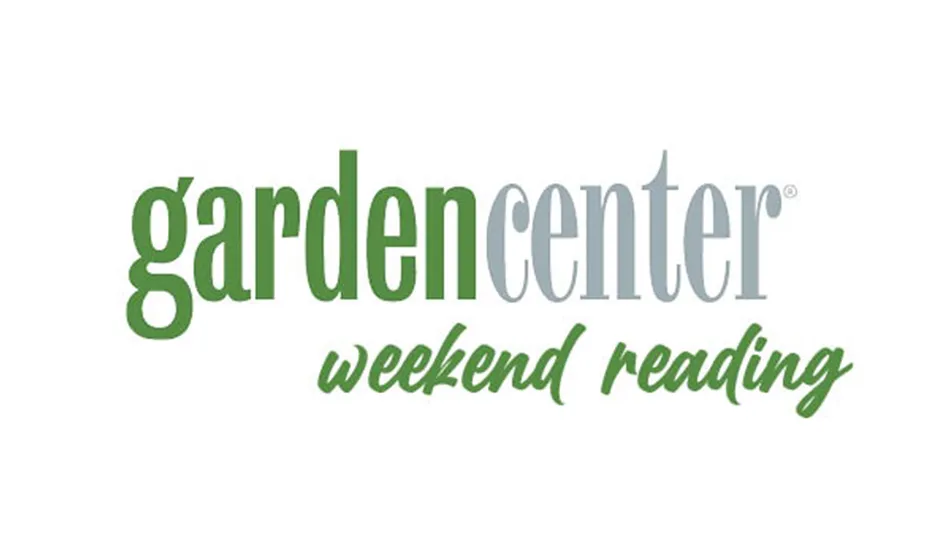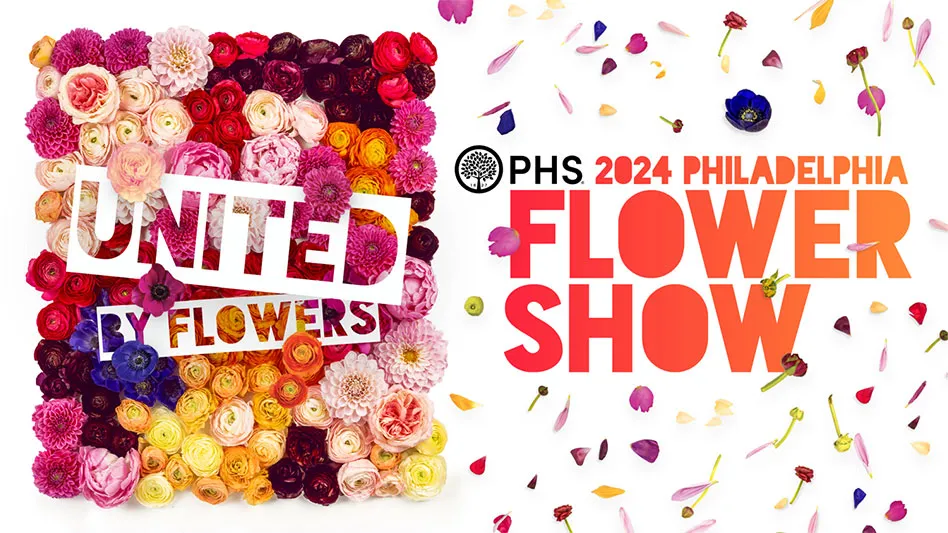 Balance of work and play make for a happy life, and the same can be said for the garden. People are now seeking enjoyment in quality of life as the economy continues to improve, and chic outdoor décor and essential greenery will be balancing gardens in 2014.
Balance of work and play make for a happy life, and the same can be said for the garden. People are now seeking enjoyment in quality of life as the economy continues to improve, and chic outdoor décor and essential greenery will be balancing gardens in 2014.
“Consumers are vowing to restore balance to their lives,” says Susan McCoy, trendspotter and president of Garden Media Group. “People are being thoughtful in their actions and mindful of their impact on the economy, their locale and the environment.”
In its 13th Garden Trends Report, Garden Media finds consumers spending more leisure time outdoors and “decorating” their gardens, not just their homes. People are socializing more, hosting garden parties, lawn games and brewing events and taking more of an interest in being good stewards of the Earth.
Globally, the 2014 Garden Trends Report finds the gardening and outdoor living market is expected to increase yearly by 3.5% through 2016, when it should reach $220 billion. The North American market, which has remained flat at $58 billion, is expected to grow annually at a rate of 1% for the next four years.
“2014 is about balance,” says Katie Dubow, creative director for Garden Media. “People understand the serenity the outdoors brings to their lives, but they want that space to provide both a private oasis and a hangout for socializing."
Twelve trends for 2014
Pulling together global market research findings and consumer media experts within the home and garden industry, Garden Media has formed 12 trends for 2014.
1. Ground up: Responsible food waste management is a growing concern in the U.S. According to the U.S. Environmental Protection Agency (EPA), Americans generated 35 million tons of food waste in 2010, accounting for nearly 12% of the total waste produced in this country. 97% of this food waste ends up in the nation’s landfills, where its decomposition generates 16.2% of the country’s methane emissions1.
The costs — both environmental and financial — of buried food waste are drawing attention from cities across the country, a growing number of which are implementing incentives and regulations to control and reduce food waste.
Food scraps are becoming the “new recyclables.” Composting is on the rise, with 25% of households participating2.
The keys to success for the consumer are education and making food recycling easy. Products such as countertop compost buckets help by shredding food scraps into small bits and starting consumers off on the road to success.
2. Super foods, super models: Edibles are advancing to the next level with foodies and health-conscious individuals. Nearly 47 million Americans were planning on growing edibles in 2013 for access to food that is better tasting, higher in nutrition and better quality3.
The “super models” of these higher-nutrition edibles are packed with added health benefits. Blueberries improve cardiovascular and brain health and are packed with vitamin C and fiber. Kale is high in iron, fiber4 and antioxidants5.
 3. Drink your garden: People are using these super foods to drink their gardens in a variety of smoothies, juices, craft cocktails, beer, wine, kombucha, and shrubs. The do-it-yourself aspect starts with growing and harvesting, and is topped off by the creativity poured into each glass.
3. Drink your garden: People are using these super foods to drink their gardens in a variety of smoothies, juices, craft cocktails, beer, wine, kombucha, and shrubs. The do-it-yourself aspect starts with growing and harvesting, and is topped off by the creativity poured into each glass.
Nearly one million Americans brew beer and make wine at home6. “Fermentation gardens,” in which gardeners grow hops, grains, grapes or any fruit that can be fermented, are “the new chickens” in terms of trending popularity, according to Southern Living’s Rebecca Reed.
4. Dress up your yard: From decorative throw pillows to fanciful furniture and colorful garden ornamentation, homeowners are putting their personal stamp on their yards.
There is a growing emphasis on using outdoor spaces as extensions of today’s homes, fueled by the social trends of outdoor gatherings for barbeques and lawn parties7. This new emphasis will drive demand for outdoor furniture, planters and other furnishings that can be used out-of-doors.
5. Simple elegance: Classic elegance in colors and visuals will become a popular attitude of 2014. Think monochromes or pairing a single color with white for simplicity, whether for plants, pots, outdoor fabrics or furnishings. This is also achieved by planting a single variety for an even more dramatic sense of unity.
6. Cultur-vating: Taking local to the next level, people are growing the world in their gardens, mixing cultures and embracing what is local to their own region. As they connect to the history that surrounds them, they are gaining an appreciation for the land, the people, and the culture that have brought their community and region to this point in time.
As they embrace “local” they are willing to improve or enhance their lives with “outside locals”—elements from other cultures that add inspiration or a hint of the exotic. This balancing of old and new promises to take the local movement to new frontiers.
7. Frac’d up: Neat clean lines are out. Geometry explodes in the outdoor living space in the form of fractional shapes like triangles, circles and squares. This adds architectural structure to the garden, whether it’s with the structure of the plants themselves, the designs into which they are planted, or the art and accessories that accompany them.
8. Young men in the dirt: Young men are discovering the great outdoors and are grilling, growing and taking their kids out to play in the dirt. This demographic is also heavily involved in the brewing and wine making trends, growing their own hops, grains and grapes. They also gravitate toward edibles, like hot peppers, that can be used in grilling.
Young men are also making parenting more of a “guy thing.” With 20% of fathers as the primary caregivers of preschoolers and 33% regularly caring for their children8. These fathers are instilling in their children an appreciation for nature and the outdoors at an early age.
9. Bee-neficials: Bees are at the forefront of environmentally aware consumers’ minds, inspiring them to plant native, pollen-rich flowers, trees and veggies to provide safe shelters.
With more than 85% of the planet’s plant species dependent on pollinators for their existence—many of them food crops—the fact that one-third of all honey bee colonies in the country are depleted is of grave concern. Consumers are taking steps to nurture biodiversity to counter bees’ habitat loss by providing bee shelters in attractive and effective forms. Consumers are also being careful to limit dangerous chemicals and bee habitat destruction.
10. Think gardens: Plants make us smarter, more productive and less stressed and are showing up in offices, schools and hospitals across the country. The use of indoor plants is on the rise not just for their decorative character but also for their ability to inspire, calm, reduce stress and provide a natural balance9.
Garden environs are a good change of scenery for office workers, schoolchildren and hospital patients, as well. Allowing time for outdoor meetings and classes, and providing access to hospital gardens go a long way in decreasing stress and increasing focus and productivity.
11. Fingertip gardens: Modern technology has made everyday life more convenient. Gardeners can benefit, too, with mobile apps and technology10,11,12. From countertop hydroponic growing systems and solar lighting controls to garden design mobile apps and posting garden updates via social media, high-tech has entered the garden to stay. With this new convenience, gardening opens itself to a new tech-savvy demographic.
12. Tree-mendous reversal: There are many environmental, economical, and emotional benefits of trees: trees increase property values, save on heating and cooling expenses, reduce stress, foster safer, more sociable neighborhoods and clean the air. However, more than four million urban trees are lost each year13. Americans are being asked to plant or care for trees to replenish this loss. Doing so brings together and benefits communities. These dozen trends offer insight into how consumers will seek to bring balance to their lives through the home and garden segment.
McCoy suggests garden center retailers take action now to in order to provide the products, services, ideas and inspiration that their customers will be searching for in the months to come.
The complete 2014 Garden Media Trends report is available for free download at http://grow.gardenmediagroup.com/2014-Garden-Trends-Report. Individual global and garden trends for 2014 will be discussed in more detail every Thursday on the Garden Media blog, GROW! at http://grow.gardenmediagroup.com/blog.
1 U.S. Environmental Protection Agency
2 Natural Marketing Institute 2013
3 Garden Writers Association 2013 April Gardening Trends Research Report
4 U.S. Highbush Blueberry Council
5 The Green Cycler (http://www.thegreencycler.com/2013/super-foods-and-healing-herbs-the-key-ingredients-for-a-wellness-garden/)
6 Home Brewers Association (www.homebrewersassociation.org/pages/government-affairs/talking-points)
7 Global Industry Analysts
8 U.S. Census Bureau
www.kickstarter.com/projects/modernsprout/modern-sprout-decorative-hydroponic-planter
9 www.architizer.com/en_us/projects/view/thinkgarden-where-doing-business-is-natural
10 Urban Gardens Web www.urbangardensweb.com/2013/06/10/ten-futuristic-garden-tools/
11 New York Times www.nytimes.com/2013/04/25/technology/personaltech/calling-on-gadgetry-to-keep-the-garden-growing.html?smid=pl-share&_r=0
12 Apartment Therapy www.apartmenttherapy.com/hitech-plant-care-a-geeks-guid-152124
13 Washington Post http://www.washingtonpost.com/politics/federal_government/promoting-the-benefits-of-planting-trees-in-cities/2013/07/29/94ceed9a-f89b-11e2-afc1-c850c6ee5af8_story.html

Explore the December 2013 Issue
Check out more from this issue and find you next story to read.
Latest from Garden Center
- Weekend Reading 5/17/24
- GardenComm 2024 Annual Conference registration is open
- Landmark Plastic celebrates 40 years
- Proven Winners introduces more than 100 new varieties for 2025
- Weekend Reading 5/10/24
- The Family Business, Part 2: Agreeing (and disagreeing) on capital investments
- Registration opens for Darwin Perennials Day
- Weekend Reading 5/3/24





